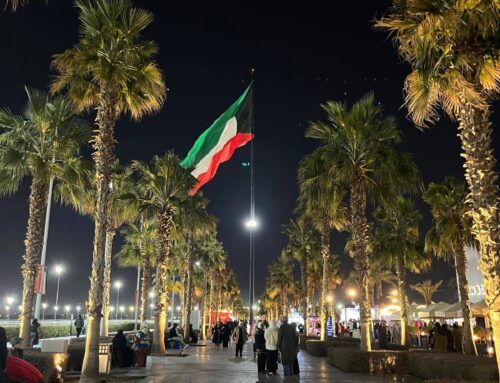Discovering South Africa Through Its Incredible Food Scene
One of our absolute favorite ways to dive into a new country is through its food and drink culture. And wow, South Africa completely blew us away with flavors and dishes we’d never encountered before. Every meal became a mini history lesson as we learned about the fascinating blend of cultures that shaped each dish: Dutch settlers, indigenous traditions, Malay influences, and British colonial touches all coming together on one plate.
While you might find some packaged versions of these foods in international markets back home, trust me when I say there’s nothing quite like experiencing them fresh in South Africa. The flavors are bolder, the preparations more authentic, and honestly, the stories behind each dish make them taste even better.
A Meat Lover’s Paradise
Let’s be real, South Africa takes its meat seriously. Whether it’s rooted in the country’s hunting heritage or just a deep cultural appreciation for perfectly grilled protein, carnivores will feel right at home here. For our vegetarian friends, though, you’ll need to do a bit more searching. Most restaurants helpfully mark their vegetarian options with green symbols, but the choices are definitely more limited compared to the extensive meat selections.
And if you’re gluten free like me, be prepared to ask questions at restaurants. Unlike many countries where gluten free items are clearly marked, South African menus rarely indicate these options, so don’t hesitate to chat with your server about ingredients.
Beyond the usual suspects of beef steaks and chicken dishes, South Africa offers some truly unique protein adventures. Keep an eye out for springbok, eland, kudu, or impala on restaurant menus. These are all antelope species that offer lean, healthy meat with a distinctly gamey flavor that’s quite different from conventional livestock. If you’re feeling adventurous, try springbok carpaccio for something elegant, kudu sausage rolls for comfort food vibes, or eland biltong for a truly local snacking experience.



Biltong: South Africa’s Superior Jerky
Speaking of biltong, this is an absolute must have if you visit South Africa. Think of it as beef jerky’s sophisticated older cousin. The preparation process is what makes it special: raw meat gets soaked in a vinegar and salt solution before being air-dried to perfection. This traditional preservation method creates something that’s safe to eat for months and packed with flavor.
What makes biltong even better is the variety. You’ll find it made from virtually any type of meat, each with different seasoning blends. We became slightly obsessed with sampling different versions from grocery stores, gas stations, and local butcheries. Each place had their own signature style, and honestly, it became our go-to road trip snack.
Right next to the biltong, you’ll usually find droewors – think of it as biltong’s sausage cousin. It’s always thin (think like a Slim Jim) and can range from completely dried to a softer, more moist texture like summer sausage. The quality difference from mass-produced snack meats is immediately noticeable.
For fresh sausage lovers, boerewors (literally “farmer’s sausage”) is a must-try, though you’ll need to cook it yourself since it’s sold raw. Perfect for grilling or pan-frying, boerewors has a distinctive coarse texture and robust flavor. One heads up for those with food allergies, many commercial versions contain cereal fillers, so they’re not gluten free. However, we did find several brands that kept it pure meat, so just check those labels carefully.
The Braai: More Than Just Grilling
A braai isn’t just South Africa’s version of a barbecue, it’s a cultural institution and social event rolled into one delicious experience. The process begins hours before anyone eats, with wood being burned down to create those perfect glowing embers. This isn’t rushed; it’s part of the charm.
What we loved most about braai culture is how it brings people together. Everyone gathers around, drinks in hand, sharing stories and catching up while the fire slowly transforms into the ideal cooking surface. The braai master (and yes, this is a respected title) then orchestrates the cooking of everything from boerewors and lamb chops to chicken, ribs, and even vegetables.
But here’s where it gets really interesting. South Africans will braai almost anything. We watched in amazement as corn, garlic bread, potatoes, and even toasties (grilled sandwiches) got the braai treatment. That smoky flavor transforms even simple ingredients into something special.
South African grocery stores dedicate entire sections to braai supplies, and walking through them is like touring a grilling wonderland. Tons of different meat seasonings, specialized utensils, various types of wood, and refrigerated sections stocked with braai-ready meats and sides. If you get the chance to join a braai gathering, don’t hesitate! The food is always incredible and the social aspect makes it even more memorable.


Comfort Food with a Twist
For those who prefer their meals in stew form, potjiekos deliver serious comfort food satisfaction. This beloved South African tradition involves slow-cooking meals in distinctive three-legged cast iron pots called potjies. The cooking method traces back to Dutch settlers in the 1600s, and it’s basically the perfect marriage of outdoor cooking and hearty, soul-warming food.
The beauty of potjiekos lies in its flexibility: almost any meat works, combined with vegetables and simmered in a rich, thick broth that develops incredible depth of flavor over hours of slow cooking. It’s the kind of dish that fills your belly and warms your heart.
The best potjiekos we encountered were served over samp, which might just be our new favorite grain. Samp is roughly cracked and dried corn that gets re-hydrated during cooking, creating a texture that’s incredibly satisfying. Imagine hominy but without any harsh lye flavors. It’s the perfect base for absorbing all those delicious stew juices.
Another corn-based staple you’ll encounter is pap, which is essentially ground corn prepared like grits. But pap is wonderfully versatile too. It can be served as a wet, porridge-like dish that’s perfect with milk and sugar for breakfast, or as a much drier, crumbly version that pairs beautifully with tomato-based sauces and meat dishes. Think of it as South Africa’s answer to polenta, but with its own unique character.
Bobotie deserves special mention as one of South Africa’s most distinctive and delicious dishes. At its heart, it’s a ground beef casserole, but that description doesn’t do justice to the complex flavors at play. The version we tried was perfectly seasoned with curry spices that created warmth without overwhelming heat. But here’s the genius part, raisins are mixed throughout, adding unexpected pops of sweetness that balance the savory spices beautifully.
The whole dish is bound together with beaten eggs before baking, creating a texture that’s part casserole, part custard. It’s typically served alongside rice, pap, or samp, making it a complete, hearty meal that showcases the multicultural influences that define South African cuisine.
South African pancakes completely surprised us and quickly became a meal we actively sought out. They occupy a delicious middle ground between crepes and traditional pancakes, but what makes them special is the endless variety of fillings: both sweet and savory options that can easily constitute a full meal.
The pancakes themselves have a lovely tender texture that’s sturdy enough to hold generous fillings without falling apart. We tried everything from traditional sweet versions with cinnamon and sugar to savory combinations with cheese, vegetables, and meat. They’re comfort food at its finest and show off South African creativity in the kitchen.



Rooibos: The National Treasure
If South Africa has a national drink, it’s absolutely rooibos tea, and once you try it, you’ll understand why it’s beloved throughout the country. This naturally caffeine-free tea has a smooth, naturally sweet flavor with hints of vanilla and caramel that make it incredibly easy to drink any time of day.
What’s fascinating is that rooibos comes from a plant that grows exclusively in South Africa’s Cederberg mountain region. Despite numerous attempts by other countries to cultivate it, this unique shrub with its needle-shaped leaves simply won’t grow anywhere else in the world. The name “rooibos” means “red bush” in Afrikaans, referring to the deep crimson color the processed leaves develop.
You’ll find rooibos everywhere in South Africa: every hotel and restaurant serves it, convenience stores stock bottled cold and sparkling versions, and we even discovered rooibos-flavored milkshakes and gum. It’s become so embedded in the culture that many South Africans drink it as naturally as Americans reach for coffee.
The beauty of rooibos lies in its versatility and gentle nature. Unlike caffeinated teas, you can enjoy it throughout the day without worrying about staying up all night. Its natural sweetness means it’s delicious on its own, though it also takes well to milk and honey if that’s your preference.
The Bottom Line
South African cuisine tells the story of a complex, multicultural society through its food, and every dish we tried felt like a small window into the country’s rich history. From the social ritual of a braai to the unique flavors of bobotie, from the satisfying heartiness of potjiekos to the refreshing simplicity of rooibos tea, South Africa’s food scene offers experiences you simply can’t replicate anywhere else.
The best part? South Africans are incredibly proud of their culinary traditions and love sharing them with visitors. Don’t hesitate to ask questions, try new things, and let your taste buds guide you through this incredible country. Trust us, your stomach will thank you for the adventure.
Discover more from Penley Perspective
Subscribe to get the latest posts sent to your email.





